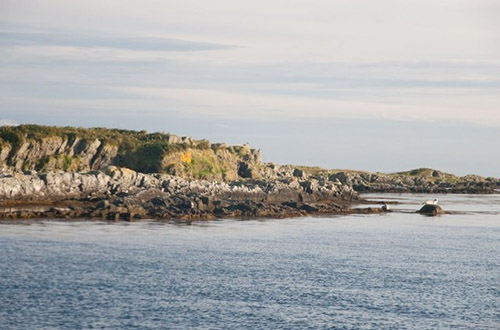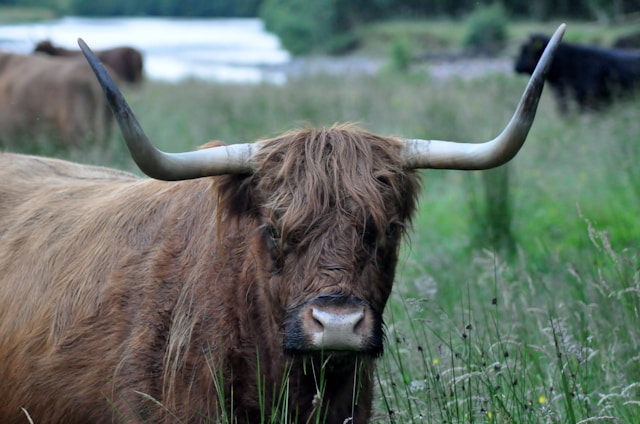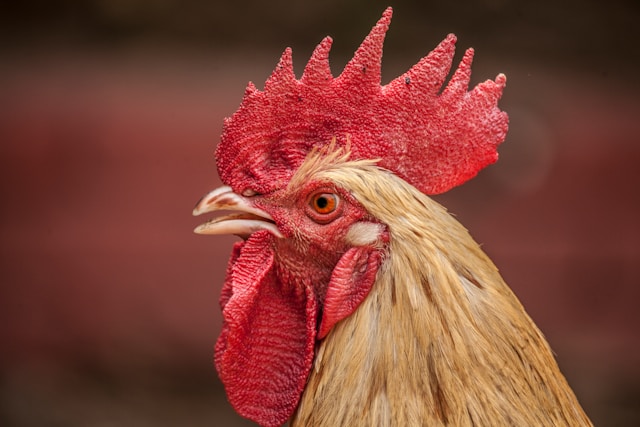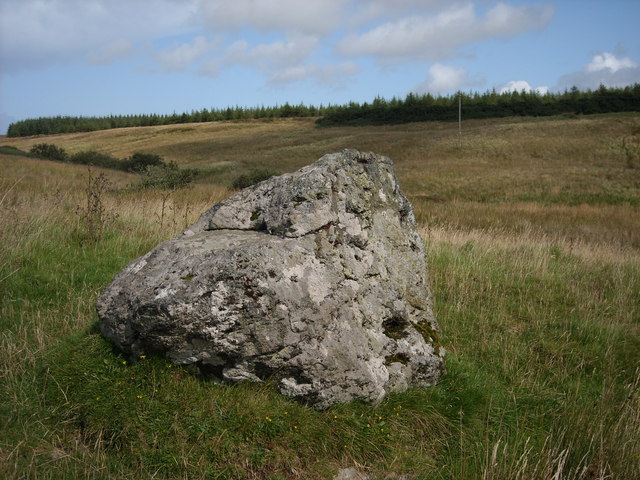Islay is an island to the west of Scotland, at the entrance to the Firth of Lorn. It’s 25 miles north of Northern Ireland. Archaeological evidence shows people lived here from 8000 BCE, with evidence of Neolithic and Bronze Age tombs and burial sites.
Columba and his missionaries brought Christianity to the island, which Norse raiders also adopted once they settled. Islay lay on the route between Ireland and Scandinavia, making it an easy stop for Vikings. The Hebrides only joined Scotland in 1266.
It’s famous for distilling and farming, although tourism provides extra income. But what folklore does Islay have? Let’s find out!
Islay Origin Story
As one legend goes, Iula (or Yula) was a princess among the giants in Denmark. One day, she decided she wanted to see some of the world. She left Denmark and travelled around Europe. As she went, she dropped stones from her apron which became islands where they landed in the sea. The final stone became Islay, but a great storm blew up and Iula succumbed to the powerful seas. Legend has it that Islay takes its name from Princess Iula.

The Water Bull and the Water Horse
Believed to live in moorland lochs, the tarbh-uisge, or water bull is a bovine version of the water horse, or each-uisge, except it’s believed to be better-tempered (Campbell 1860: 329). That’s the water horse and not the kelpie – kelpies live in rivers and streams, while the each-uisge lives in the sea or lochs (Briggs 1976: 115).
The water bull can father offspring with ordinary cows, but the small ears give away their parentage. One Islay legend saw such a calf born with strange ears. A local woman advised the farmer to keep it alone in a barn for seven years, feeding it on the milk of three cows. The farmer did so, since the old woman’s advice was always taken.

Some time later, a servant took the herd of cattle to graze beside the loch. She sat on the bank, but soon after, a man approached, asking that she comb his hair for him. He laid his head in her lap and she began combing his hair, only to find seaweed growing among it. The servant was wise enough to know that her would-be suitor was a water horse, but if she screamed, he would kill her. So she kept combing until he fell asleep. She gently crawled out from under the man’s head and ran back to the farm.
As she approached the farm, she glanced behind her and saw a horse pursuing her. This could only be her companion from the loch in his true form. Luckily, the old woman saw the chase and shouted that the girl should open the bull’s barn. The servant did so, and the bull charged at the horse. They fought, and the bull drove the horse towards the sea. The next day, the farmer found the bull’s body on the beach, but no one saw the horse again (Campbell 1860: 335).
The Blacksmith and the Changeling
A blacksmith named MacEachern lived on the island in Crossbrig with his son. One day, the son fell ill, and no remedy could cure him. An old man stopped by the cottage and inspected the ill teenager in his sick bed. He pronounced the problem: this was not MacEachern’s son, but rather, a fairy changeling.
Still, it was worth double-checking, so the old man recommended that he spread empty eggshells around the room. Next, MacEachern was to draw water with them, carrying them in pairs as if they weighed a ton, before arranging them around the fire. MacEachern did as instructed, watched all the time by his ‘son’. The boy laughed and cried out that he’d never seen such a thing in all his 800 years.
Next, the old man advised MacEachern to light a fire in front of the bed. The boy asked what the fire was for, and MacEachern threw the boy into it. The changeling screamed and disappeared up the chimney.
Luckily, the old man knew what to do next.
He sent MacEachern to Fairy Hill with a knife and a cockerel. Don’t worry, he didn’t need them for what you think he might have needed them for. MacEachern found an opening in the side of the hill and thrust the knife into it. The hill cracked open and MacEachern pushed his way inside.

There, inside the hill, a celebration was underway, with fairies dancing and making merry. Beyond them was a fairy forge. Even better, his son worked at the forge, enchanted by the fairies. MacEachern roared and demanded his son’s return, and the sound prompted the cockerel to crow and flap its wings. Between the noise of the cockerel and the blacksmith, the fairies couldn’t stand the commotion. They threw MacEachern and his son out of the hill. MacEachern removed his knife and the hill closed behind them.
Throwing the son out of the hill broke the fairy spell, but he took him a year and a day to speak to his father. Eventually, MacEachern worked at the forge on a sword, when his son suddenly spoke up. He disagreed with MacEachern’s methods, and took over at the forge. He made a sword the like of which had never been seen among humans, and he went on to work with his father at the human forge. MacEachern’s son now had fairy blacksmithing skills, which stood him in good stead for his blacksmithing career (Pattison, no date).
The Toothache Stone
In our visit to Lindisfarne, we discovered the petting stone, part of a wedding custom on the island. Islay is no different, boasting the Toothache Stone near Port Charlotte.

As you might imagine from the name, people visited the stone when they had toothache. They hammered nails into the stone, with the idea being that their toothache would disappear when they’d finished. You can still see iron and copper nails hammered into the rock (The Newsroom 2016).
Speaking of stones, there’s also the Kilchoman cross from the 14th century. A stone sits at the cross’s base, and islanders would turn it clockwise when making a wish (The Newsroom 2016). Kilchoman Churchyard is currently closed due to safety concerns.

Ghost Stories of Islay
And of course we couldn’t visit the island without looking at ghost stories. There are two I want to share with you, the first being from Port Ellen. The second-largest town on Islay is home to a former whisky distillery, which is said to be haunted.
As the story goes, a burglar broke in, but got distracted by the barrels of malt whisky. After enjoying a dram or two (or four), he decided to leave, and rushed to the nearest exit. Unfortunately, he forgot he’d gone to the second floor, and he didn’t survive the fall out of the window. While the window has been bricked over, the burglar apparently still appears on the spot where he landed (Islay Cottages 2024).
The other story comes from Bowmore, Islay’s largest town. Crofter Lachlan Ban returned home for the night during a fearsome storm. As he approached, a headless horseman dashed away from his house. Ban gingerly approached the house and found the door standing open and the fire blown out. A bottle of whisky stood on a table beside an empty glass. What kind of ghost leaves alcohol?
The answer is: not a ghost. It turned out Ban’s brother dropped by for a visit, bringing the whisky with him. The wind threw open the door and blew out the fire. Ban’s brother didn’t want to stay much longer for fear the storm would worsen, so he had a quick drink and left. He pulled his cloak up over his head to keep out the bad weather… (Islay Cottages 2024).
The Wonderful Folklore of Islay
Islay’s history shows a lot of movement of people. Different groups of people arrive, which might explain the local takes on familiar stories. That’s not to say that the stories didn’t happen, of course. There is just that familiarity about them, while retaining differences, like the water bull story. There are some versions of the lore which say that if you find one in your herd, you should kill it (except by drowning). Otherwise, it’ll bring disaster to the whole herd.
Yet there is also a distinct local flavour to this stories. Whether it’s the headless horseman avoiding the storm, the blacksmith retrieving his son, or the water bull defending the servant, there’s something striking about these tales.
Which of these Islay stories was your favourite?
References
Briggs, Katharine (1976), A Dictionary of Fairies: Hobgoblins, Brownies, Bogies, and Other Supernatural Creatures, London: Penguin Books.
Campbell, John (1860), Popular tales of the west Highlands, Edinburgh: Edmonston and Douglas.
Dumfries and Galloway Standard (1857), ‘Scotland’, Dumfries and Galloway Standard, 29 July, p. 3.
Islay Cottages (2024), ‘Not a Whisky Spirit! Ghost stories from Islay Scotland’, Islay Cottages, https://islaycottages.com/blog/not-a-whisky-spirit/.
Pattison, Rev Thomas (no date), ‘The Smith and the Faeries’, Folklore Scotland, https://folklorescotland.com/the-smith-and-the-fairies/.
The Newsroom (2016), ‘The Toothache Stone and other tales of Islay lore’, The Scotsman, https://www.scotsman.com/whats-on/arts-and-entertainment/the-toothache-stone-and-other-tales-of-islay-lore-608863.
Nutty about folklore and want more?
Add your email below and get these posts in your inbox every week.
You'll also get my 5-step guide to protecting your home using folklore!








Have your say!